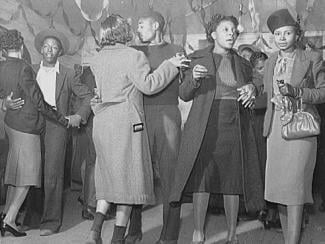
Originating in New Orleans in the 1890s, Slow Drag is a social dance fusing Ragtime, Blues, and traditional African dances mixed with slower, sensual movements.
Slow Drag came roughly one generation after emancipation. It was one of the first social dances our ancestors explored freely, reclaiming their own desires and sensualities after generations of hypersexualized trauma.
Slow Drag was danced in Southern juke joints, but over time it spread all the way to the Big Apple.
Where anti-Blackness wished to see it rot.
Slow Drag hit Broadway in 1929. This was huge as it was the first Black social dance ever to do so.
Anti-Black critics claimed the dance was too sexual. But our people knew Slow Drag was more than dancing.
From 1910 through the 1970s, roughly six million Black people migrated from the South to Northern, Midwestern, and Western regions. But even throughout The Great Migration there was a need to preserve southern customs.
Slow Drag, and other social dances, became acts of resistance in establishing one's sense of self in a new place.
Dance has always been a mode of expression, joy, and resistance for us.
It’s important we have creative outlets, like dancing, that bring us radical joy. Radical joy inspires radical protest.